Federation Technology And Charts
![]()
| Federation Ship's Computer Core | |
 |
Probably the single most important operational element of a starship is it's main computer system, being responsible in some way for most every aspect of the ship's operation. The heart of the system is a set of three main processing cores, which incorporate a series of miniature subspace field generators to allow the processing of optical data at rates faster than the speed of light. The computer cores are redundant, so any one can handle the computing load of the entire ship should the need arise. An intricate optical data network (ODN) connects the cores with virtually every component on board the ship, and a subspace link is maintained with hand-held or remote devices needing computer access.
|
| Warp Propulsion System | |
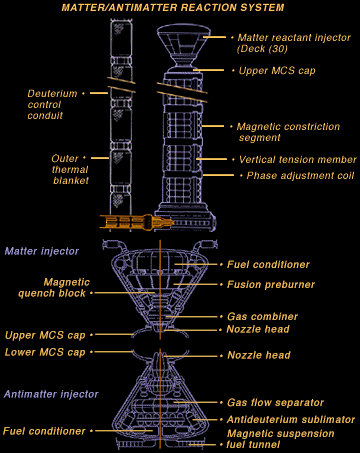 |
A starship's Warp Propulsion System (WPS) consists of three major assemblies. First, the matter/anti-matter reaction assembly (M/ARA) generates power from a controlled annihilation of matter and antimatter. Second, the power transfer conduits carry the energy plasma from the reaction chamber to the warp engine nacelles; at this point, power to run the bulk of the ship's non-propulsive systems is accessed by electro plasma system (EPS) taps. Finally the plasma is directed to the warp engine nacelles, where it is used to create the subspace mechanics necessary for faster-than-light travel. While a starship carries "traditional" fusion reactor fuel as well, the bulk of a ships systems depends upon the WPS for their operation.
|
| Dilithium Crystals | |
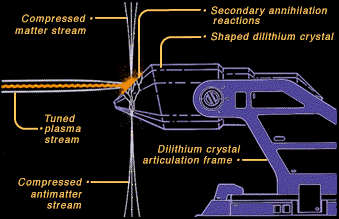 |
As the key element in all Federation warp engine designs, the dilithium crystal mediates the reaction between the matter and anti-matter in a starship's main engine core. Dilithium is the only material known to be non-reactive with antimatter when subjected to a high frequency electromagnetic (EM) field, rendering it "porous" to antihydrogen. Dilithium permits antimatter to pass directly through it's crystalline structure without actually coming into contact with it, due to a field dynamo effect. Once found only in nature, the technology of the 24th Century antieutectics enables the formation of pure, synthesized dilithium and dilithium matrix re-crystallization through the use of high energy photon injection.
|
| Warp Drive Nacelles | |
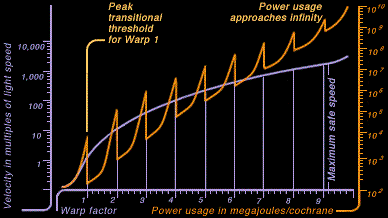 |
The subspace field necessary to propel a starship across vast interstellar distances is created by a combination of the specific configuration of the starship hull and the warp field coils located in the two warp drive nacelles. These coils generate an intense, multilayered field surrounding the ship, and it is the manipulation of this field that produces a propulsive effect. Each nacelle contains a number of warp field coils; when energized, the coils cause an energy shift that actually changes the geometry of space around the starship. When the coils are fired sequentially, they create warp field layers that press upon each other and cumulatively reduce the apparent mass of the vehicle, allowing the ship to move faster than the speed of light.
|
| Flight Information Input | |
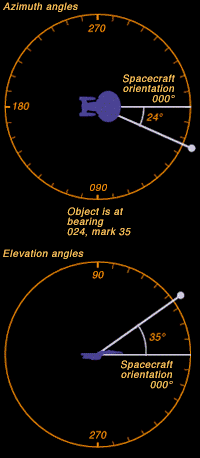 |
There are five standard input modes available for specification of spacecraft flight paths, which may be entered by keyboard or spoken voice command. Flight control software automatically calculates optimal flight paths, which can be executed or modified by the Conn officer. The modes are: Destination Planet or System: Any celestial object or known facility within the navigational database is acceptable. Destination Sector: By sector ID number or common name. Spacecraft Interception: Of any craft located by sensor lock. Relative Bearing: Flight vector specified as an azimuth/elevation relative to the ship's orientation ("000-mark-0" = straight ahead). Absolute Heading: Flight vector specified as an azimuth/elevation relative to the galaxy ("000-mark-0" = galactic center).
|
| Transporter | |
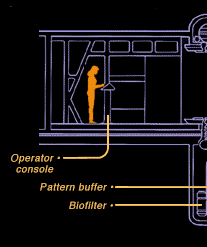  |
Transporter operations consist of four major stages: Target Scan and Coordinate Lock: Programming of destination coordinates, range and relative motion scanning, confirmation of suitable environmental conditions, and diagnostic procedures. Energize and Dematerialize: Molecular imaging scanners derive a real time quantum-resolution pattern image, while energizing and phase transition coils convert the subject into a debonded matter stream. Pattern Buffer Doppler Compensation: The matter stream is held in a pattern buffer, compensating for Doppler shift. Matter Stream Transmission: Point of departure from ship through one of multiple pad arrays to transport destination
|
| Warp Speed Chart |
Standard Orbit

Full Impulse
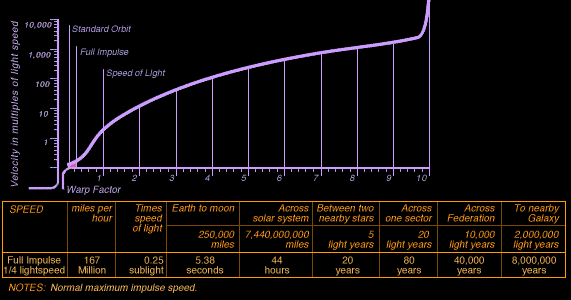
Warp 1

Warp 2
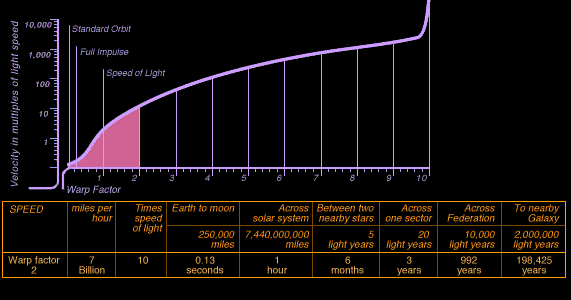
Warp 3

Warp 4

Warp 5

Warp 6

Warp 7
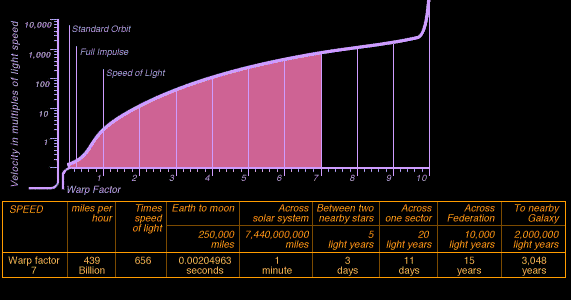
Warp 8

Warp 9
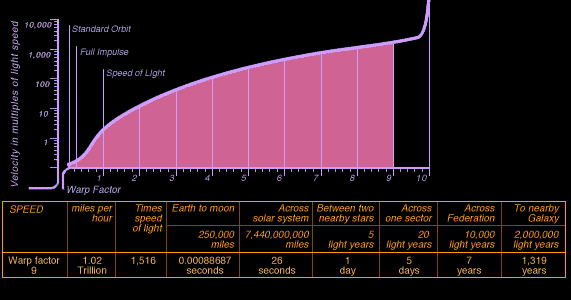
Warp 9.2
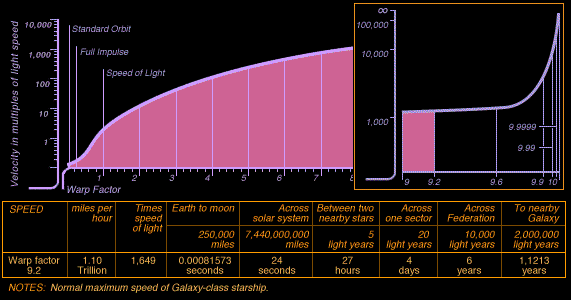
Warp 9.6
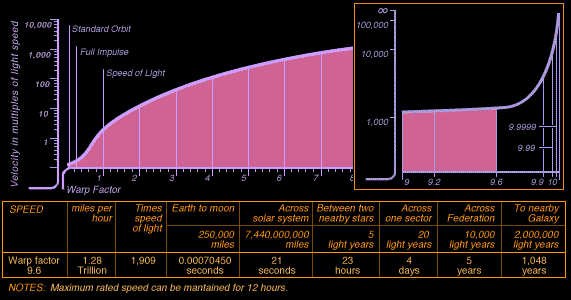
Warp 9.9

Warp 9.99
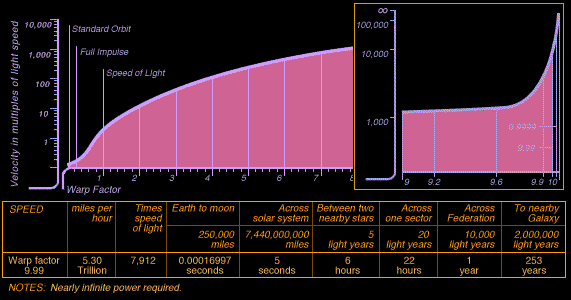
Warp 9.9999
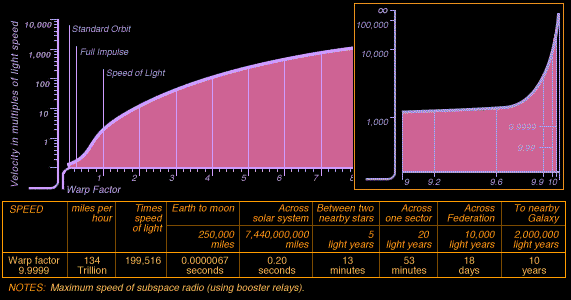
Warp 10

![]()
